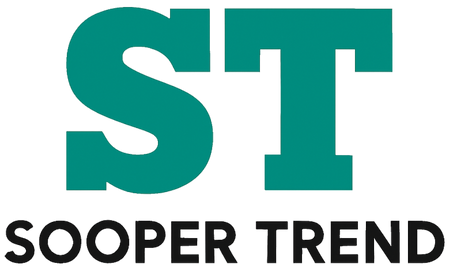If you want to become an employee trainer, you should be prepared to deal with several challenges. Technology can cause problems, and you must be adaptable to deal with them. As a trainer, you will also deal with adults from different backgrounds, lifestyles, education levels, and behavior styles. Barbara Davis Robinson once said that a good trainer should pay equal attention to sprinters and stayers.
Contents
Developing a team of employee trainers
When building an employee training program, a key component is developing a team of employee trainers. This group is responsible for leading training sessions and devising skill development programs. They also work with managers and business groups to determine training needs. In addition, the onboarding period is critical in making an excellent first impression. For this reason, building a connection with employees during this time is essential. For example, one aviation and aerospace firm used a story-based video strategy to introduce new employees to the culture.
Employee training can be a tremendous advantage for any organization. It allows employees to adopt new processes, models, and technologies quickly. However, it is essential that the training is consistent. With consistent training, employees can learn new processes or technologies as quickly as they would otherwise.
To develop a team, companies must first define what success looks like. This way, they can measure the impact of their training and development efforts. To do this, they need to understand the skills gaps between employees’ current skills and superior skills. This can be done by mapping the skill gaps with a competency framework. The competency framework also helps to communicate training and development goals. Using this framework, you can determine the most impactful skills that employees must master.
Developing a plan for training
Developing a plan for training involves identifying the purpose of the training and its target audience. This goal can be anything from preparing employees for an emergency, improving your company’s products and services, or even protecting client privacy. It also involves identifying the benefits for the trainees, such as earning a new certification or gaining more job security.
When developing a plan, consider the learners’ learning styles and preferences. For example, they may need to be more comfortable with a particular training style. Make sure the material is accessible to trainees by using appropriate technology. Your plan should also include concrete assessments that can be used to improve the training. For example, you could include a test, a survey, or feedback forms.
Besides evaluating the needs of your employees, you should also consider industry trends and current staff. For example, a seasonal workforce may require health and safety protocols training, while existing employees may need upskilling. Detailed job descriptions may help you identify training gaps. Then, you can create a training plan that addresses these needs. You should also consider the type of training you’ll be delivering.
Developing a plan for training is the first step to ensuring that you get the best results from your training investments. A well-designed training plan can help employees become more effective, engaged, and productive. Your employees will feel empowered when they have been allowed to learn something new.
Creating an evaluation
Creating an evaluation is an integral part of any classroom training program. It lets you see if your training is practical and helps you improve your program. It can also act as a feedback loop by identifying which teaching methods work best.
When evaluating a program, questionnaires are the most common method. These are structured surveys and quizzes that ask participants to provide helpful information. They are also great for assessing learners’ feelings about a program after a training session. Numerous questionnaire software packages will help you design and format a questionnaire. Some of these tools even let you add images to the questions.
Training evaluation forms should have at least five sections. The first section is an introduction that provides a brief description of the form and its contents. The second section should assess the learning objective, impressions, questions, and training pace. The notes you gather should be summarized and used to provide valuable feedback to the trainer.
After you’ve identified the purpose of the evaluation, you can determine the data types to collect. This way, you can see whether the training was practical and what improvements need to be made. A good evaluation will also help you make better decisions about the training you offer in the future.
An evaluation form should include questions about the worker’s opinions about the training. The form should be customized based on the culture and goals of the company. For example, if the training was about HIV care, you should include questions about how the training affected them. A good form should also include questions on how to deal with HIV stigma in the workplace.
Managing a training program
The first step in managing a training program for trainers is identifying potential trainers. Potential trainers should have good communication skills, patience, empathy, emotional intelligence, and willingness to share knowledge. In addition, they should have a positive attitude. They should be role models for the trainees, especially if they are new to the organization. If you are interested in becoming a trainer, read up on the topic. There are many resources available online that will teach you how to train other people.
Another key to successful training is to have a training matrix. The matrix should list the employees’ names, job titles, and training courses they’ll be taking. Using this matrix, you’ll be able to schedule sessions accordingly. Ideally, assign every employee a general information training course. The matrix should be developed by an in-house team but can be overseen by an outside trainer if necessary.
When launching a training program, you must understand the goals of the organization and the challenges facing the trainees. Curiosity is a skill that is hard to develop, but it will increase as you invest time in making the training program successful. By asking questions and identifying the changes needed, you can optimize your program and improve it accordingly. Furthermore, you need to have good people skills and be able to network with other training program managers.
You should also consider the audience and the type of trainees when planning the training session. For example, you could focus on accounting, but you could also include discussions about other disciplines. For example, you could teach your trainees how to identify hazardous materials in the workplace, use a team decision process model, or handle a case involving multiple people.
Developing a plan for training the trainer
Developing a plan for training the trainer begins with defining what skills and knowledge should be taught. The plan should also set forth the criteria for selecting a trainer and the requirements for training. Training is typically structured as separate modules and is delivered in ways that maximize students’ learning. For instance, training should be customized for persons with disabilities or other barriers to learning. The plan should be as clear and detailed as possible so that it is easy for both the trainer and the trainee to understand and apply.




